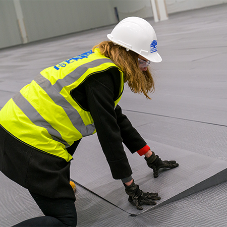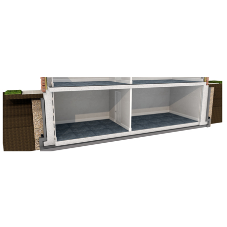Richard Powell, Roofing Sales Manager at Ravago Building Solutions UK
Some would say there are three pillars in construction: quality, sustainability, and compliance. Today, compliance is arguably number one. For architects and designers, the clearest evidence of this is likely the enormous regulatory overhaul reflected in the Building Safety Act 2022. However, the compliance landscape is also being reshaped in ways that might not be so visible to architects and designers.
One of the most confronting findings of the Hackitt Report was an ostensible lack of “consideration [by individuals] as to how work may interact with the work of others”. There’s a huge moral and professional imperative for building designers to be alive to the realities of the construction site, which includes understanding how clients and contractors are responding to current market forces and supply chain challenges, and how that in turn might impact the way you specify products.
According to data from tax advisory firm Mazars, almost 17,000 construction-related companies were at “significant risk” of insolvency at the close of 2022. Now, imagine you’re a contractor: you’ve negotiated a package of work for a roof, and one of the companies goes bust. You can't complete the roof. Suddenly, you’re having to explain to the client that the work that should have been started two months ago is being delayed even further – meanwhile, raw material prices have shot up, dragging product costs up in tandem.
Approaches to procurement
This is where strategies such as early procurement and vesting are coming in. Materials prices across the UK construction industry in September 2022 were over 16% higher than a year before, and experts anticipate that this high rate of inflation could persist into 2024. In response, we are seeing increasing numbers of contractors looking to purchase or make advance payments to reserve materials long before they’re needed, to get ahead of any future price increases. This can be a smart solution – one that even contractual experts are recommending – but in some cases, it’s throwing up new complications, such as storage.
Evolving 'Employer’s Requirements'
When large quantities of building materials are sitting around the site – or a lock-up, or even a field – for months at a time, there’s obviously a greater risk to the product, project, and people. In the past 18 months or so, it’s become increasingly common for the client or main contractor’s Employer’s Requirements (ERs) to insist on insulation containing a flame retardant, and for flammable materials to be covered in flame retardant sheeting. It’s important to consider that a product that looks suitable on paper could end up being stored for much longer than usual and/or in an unconventional manner, and account for the practicalities of this within your specification.
Product substitutions
Package renegotiations mean contractors also face the inevitable question from the client: “isn’t there a cheaper alternative?”.
Terms such as ‘or similar’ in the specification allow named products to be substituted for another that the contractor deems equal or equivalent. The issue, of course, is that it’s not always straightforward to determine equality or equivalence, and the term is inherently subjective. What contractors don’t always realise is that the product put forward as ‘similar’ sometimes doesn’t match the expectations of the specifier.
Architects should be aware that there is huge pressure on contractors to keep costs down and the client happy, so swapping for a cheaper product is often the most obvious solution – even when it is not a like for like substitute. For example, an awful lot of people are not aware that many XPS insulation manufacturers have quietly removed flame retardants from their products. There’s a certain amount of liability involved here, particularly if the material is going to be stored on-site for long periods of time: do you feel comfortable with the idea of a huge polythene tarp being the only safeguard against errant cigarette butts or power tool sparks?
One of my contractors was recently offered an XPS insulation product with a worse Euroclass (BS EN 13051-5) fire rating than the originally specified solution. This didn’t become apparent until they received the technical data sheet and Declaration of Performance. Since the roof system test t4 (BS EN 13051-5) is relevant only to the exact configuration of the system, this meant they had to retest the whole flat roof system to ensure compliance with Broof(t4) and the ERs.
Protecting your original specification
By this point I’m sure you will agree that you cannot assume that every product will meet your compliance criteria, or that your priorities will align with the contractor’s. So, what’s the solution?
Taking a more interrogative and prescriptive approach to specifying products could ensure compliance at every stage of the construction process, by preventing unwanted or unsuitable product substitutions and taking factors such as storage into account.
Gateway two will make this even more urgent come autumn when the new Building Safety Regulator can begin to block the start of any construction project where there are doubts about the compliance of the design. My advice: don’t risk it – protect your original specification and don’t sub-contract material specifications to contractors.
From inflation to insolvencies, here’s how challenging conditions are reshaping compliance on the construction site
| E | technical.uk.rbs@ravago.com |
|---|---|
| W | Visit Ravago Building Solutions's website |
| Ravago Building Solutions, Estuary Rd, King's Lynn, PE30 2HJ |




